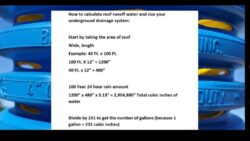Plumber’s tape, also known as thread seal tape, is a simple yet indispensable tool used in plumbing to prevent leaks and create watertight seals. In this comprehensive guide, you will learn everything you need to know about using plumber’s tape effectively. From understanding its purpose and types to mastering the proper technique of applying it, this article will equip you with the essential knowledge to confidently tackle any plumbing project. So, let’s dive in and explore the world of plumber’s tape together.
What is Plumbers Tape
Definition
Plumbers tape, also known as Teflon tape or thread seal tape, is a type of specialty tape that is commonly used in plumbing applications. It is a thin, white tape that is made from polytetrafluoroethylene (PTFE), which is a synthetic fluoropolymer of tetrafluoroethylene. Plumbers tape is designed to create a watertight seal, preventing leaks and ensuring the proper functioning of plumbing connections.
Purpose
The main purpose of plumber tape is to provide a reliable and effective sealing solution for threaded pipe connections, compression fittings, tubing and hose connections, and valve connections. It helps to prevent leaks and ensures a tight, secure connection. Plumbers tape is resistant to water, chemicals, and corrosion, making it an ideal choice for plumbing applications.
Types
There are different types of plumber tape available on the market. The most common type is standard white plumber tape, which is suitable for most general plumbing applications. However, there are also specialized types of plumber tape, such as yellow gas line tape, which is specifically designed for use with gas connections. It is important to choose the right type of plumber tape for the specific application to ensure proper sealing and safety.
Choosing the Right Plumbers Tape
Material
When choosing plumber tape, it is important to consider the material. PTFE (polytetrafluoroethylene) is the most common material used in plumbers’ tape, as it provides excellent sealing properties and is resistant to water, chemicals, and corrosion. It is important to choose a high-quality plumber tape made from PTFE to ensure durability and effectiveness.
Width
Plumbers tape comes in different widths, typically ranging from 1/2 inch to 3/4 inch. The width of the tape should be chosen based on the size of the pipe and the type of connection. For smaller pipes or tight spaces, a narrower tape may be more suitable, while larger pipes may require a wider tape for proper sealing.
Length
The length of the plumber tape is another important consideration. It is available in various lengths, typically ranging from 10 to 50 feet. The length should be chosen based on the amount of tape needed for the specific plumbing project. It is always better to have extra tape on hand to ensure sufficient coverage and avoid running out in the middle of the job.
Color
Plumbers tape is commonly available in white color, which is the standard for general plumbing applications. However, there are also colored plumber tapes available on the market. For example, yellow-colored plumber tape is specifically designed for use with gas connections, providing additional safety and visibility. The choice of color depends on the specific application and personal preference.
Preparing for Application
Gather necessary tools
Before applying plumber tape, it is important to gather all the necessary tools. These may include a pair of scissors or a utility knife for cutting the tape, a rag or paper towel for cleaning the pipe surface, and a wrench or pliers for loosening and tightening the connections. Having all the tools ready beforehand will ensure a smooth and efficient application process.
Clean the pipe surface
Before applying plumber tape, it is essential to clean the pipe surface to ensure proper adhesion and sealing. Use a rag or paper towel to remove any dirt, debris, or grease from the pipe threads. A clean and dry surface will allow the plumber’s tape to adhere better and provide an effective seal. Take care not to scratch or damage the pipe surface while cleaning.
Applying Plumbers Tape
Step 1: Wrap tape clockwise
To apply plumbers tape, start by holding the end of the tape against the pipe thread. Make sure to hold it in such a way that it will be wrapped clockwise around the pipe. This ensures that the tape is properly aligned with the direction of the thread, allowing it to create a tight seal when tightened.
Step 2: Overlap the layers
As you wrap the tape around the pipe thread, make sure to overlap the layers slightly. This helps to ensure a uniform and consistent seal. The amount of overlap will depend on the width of the tape. Generally, overlapping the layers by about 50% is recommended for optimal sealing.
Step 3: Apply the right tension
While wrapping the tape, apply slight tension to ensure a snug fit. Avoid pulling too tightly, as this can cause the tape to tear or stretch excessively. The right tension will create a secure seal without compromising the integrity of the tape.
Step 4: Cut the tape
Once you have wrapped the tape several times around the pipe thread, use a pair of scissors or a utility knife to cut the tape cleanly. Make sure to cut the tape at a 45-degree angle to prevent it from unraveling or causing a bulge. Trim any excess tape to create a neat and tidy finish.
Using Plumbers Tape for Different Connections
Threaded pipe connections
Plumbers tape is commonly used for threaded pipe connections, such as those found in plumbing fixtures, valves, and pipe fittings. It helps to create a watertight seal and prevent leaks. When applying plumber tape to threaded pipe connections, make sure to wrap the tape clockwise to ensure a tight and secure seal.
Compression fittings
Plumbers tape can also be used with compression fittings, which are commonly found in plumbing installations. Before applying the tape, make sure to clean the compression fitting and the pipe surface thoroughly. Wrap the plumber’s tape around the pipe threads before attaching the compression fitting. This will provide an additional layer of sealing and help prevent leaks.
Tubing and hose connections
Tubing and hose connections can also benefit from the use of plumber tape. When connecting tubing or hoses to fittings, wrap the tape around the male end of the fitting before inserting it into the tubing or hose. This will ensure a tight seal and prevent leaks. Make sure to choose the appropriate width and length of plumber tape for the specific connection.
Valve connections
Plumbers tape can be used for valve connections, such as those found in faucets, showerheads, and other plumbing fixtures. When installing or replacing valves, wrap the plumber’s tape around the valve threads before attaching it to the pipe or fitting. This will provide a secure seal and prevent leaks.
Troubleshooting Common Issues
Leaking
If you experience leaking after applying plumber tape, it may indicate an improper seal or damaged tape. In such cases, try reapplying the tape, making sure to follow the correct wrapping technique and applying the appropriate tension. If the leaking persists, it may be necessary to replace the tape and ensure a clean, dry surface before reapplying.
Tape unraveling
If the plumber’s tape starts to unravel after application, it may be due to improper wrapping or inadequate tension. To prevent tape from unraveling, make sure to overlap the layers slightly while wrapping, and apply the right amount of tension. Additionally, cutting the tape at a 45-degree angle can help to prevent unraveling.
Excessive tape used
Using too much plumber tape can lead to installation issues, such as difficulty in tightening connections or interference with the proper function of valves or fittings. It is important to use the appropriate amount of tape for the specific connection. Follow the recommended guidelines provided by the manufacturer and avoid excessive usage.
Tape sticking out
If the end of the plumber’s tape sticks out after application, it may interfere with the functioning of valves or fittings. To avoid this issue, make sure to cut the tape cleanly at a 45-degree angle. This will create a neat and flush finish, preventing any interference or obstruction.
Removing Plumbers Tape
Step 1: Loosen the connection
To remove the plumber’s tape, start by loosening the connection. Use a wrench or pliers to turn the threaded connection counterclockwise, loosening it gradually. Take care not to damage the threads or the plumbing fixture during this process.
Step 2: Unwind the tape
Once the connection is loosened, gently unwind the plumber’s tape from the pipe threads. Slowly peel off the tape, taking care not to leave any residue behind. If the tape is adhering firmly, use a pair of scissors or a utility knife to cut through the tape and remove it.
Step 3: Clean the residue
After removing the plumber’s tape, clean the pipe threads and the plumbing fixture thoroughly to remove any residue or adhesive. Use a rag or paper towel and an appropriate cleaning solution to ensure a clean surface for future applications. Make sure to dry the surface completely before applying the new plumber tape.
Additional Tips and Precautions
Apply tape only on clean and dry surfaces
It is important to apply plumber tape only on clean and dry surfaces. Any dirt, debris, or moisture can compromise the sealing properties of the tape and affect its effectiveness. Take the time to clean and dry the surfaces thoroughly before applying the tape for optimal results.
Avoid over-tightening the connections
When tightening connections with plumber tape, it is important to avoid over-tightening. Excessive force can damage the threads or cause the tape to tear, leading to leaks. Use a wrench or pliers to tighten the connections until they are snug, ensuring a secure seal without excessive force.
Do not use tape on plastic pipe threads
Plumber tape is not recommended for use on plastic pipe threads, as it may cause damage or cracking. For plastic pipe threads, it is best to use a pipe joint compound or other suitable sealing method. Check the manufacturer’s recommendations for the specific type of pipe being used.
Check for manufacturer’s recommendations
Before using plumber tape, it is always a good idea to check the manufacturer’s recommendations and instructions. Different types of plumber tape may have specific guidelines for application, usage, and compatibility. Following the manufacturer’s recommendations will ensure proper sealing and prevent any potential issues.
Frequently Asked Questions
Can I reuse plumber tape?
Plumbers tape is designed for single-use applications and is not intended to be reused. Once the tape has been applied and removed, it may lose its effectiveness and sealing properties. It is recommended to use a fresh piece of plumber tape for each installation or connection.
How long does plumber tape last?
The lifespan of plumber tape can vary depending on various factors, such as the quality of the tape and the specific application. Generally, plumber tape can last for several years when applied correctly and used in normal plumbing conditions. However, it is recommended to regularly inspect the tape and replace it if any signs of wear, damage, or deterioration are observed.
Can I use plumber tape for gas connections?
For gas connections, it is recommended to use a specialized type of plumber tape called yellow gas line tape. This tape is specifically designed for use with gas connections and provides additional safety and visibility. Yellow gas line tape is thicker and denser than standard plumber tape, ensuring a secure and reliable seal for gas applications.
Is it necessary to apply pipe joint compound with plumber tape?
Applying pipe joint compound, also known as pipe dope, in addition to plumber tape is optional and may depend on the specific application and personal preference. Pipe joint compound can provide an additional layer of sealing and lubrication, enhancing the effectiveness of the plumber’s tape. It is recommended to check the manufacturer’s recommendations and instructions to determine if pipe joint compound should be used in conjunction with plumber tape.
Plumbers tape is a versatile and essential tool for any plumbing project. It provides a reliable and effective sealing solution for threaded pipe connections, compression fittings, tubing and hose connections, and valve connections. By following the correct application techniques, choosing the right tape, and taking necessary precautions, you can ensure a watertight seal, prevent leaks, and maintain the integrity of your plumbing system. Whether you are a professional plumber or a DIY enthusiast, knowing how to properly use plumber tape is a valuable skill that will help you achieve successful plumbing installations and repairs.





